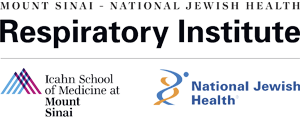Asthma Treatments
Our asthma program offers comprehensive and personalized treatment for each patient depending on your particular condition and needs. Treatments may include standard therapies such as daily inhaled and oral medications and quick relief bronchodilators. Researchers are studying non-traditional remedies such as herbal therapy, acupuncture, and hypnosis to see if they may help certain patients.
This playlist of videos from National Jewish Health show you how to use many different types of inhalers.
Rescue Medications
Rescue medications help open your airways and reduce mucus in the lungs. Our experts will determine the most appropriate medication for you.
Long-Term Control Medications
These medications are designed to reduce symptoms, improve lung function, prevent attacks, and improve quality of life. They are intended for patients who experience asthma symptoms at least twice a week or have attacks (also called exacerbations) at least once a year. Some of these drugs are oral, some are injectable. Your doctor will work with you to develop the treatment plan that is right for you.
Clinical Trials
The Mount Sinai-National Jewish Respiratory Institute is running a number of clinical trials, offering new treatments for asthma that would not otherwise be available. You may ask our asthma specialists about our ongoing clinical trials or learn more about them from the National Institutes of Health.
Other Supports
We have other devices and instruments that improve the delivery of medicines to the lungs, monitor asthma control, and assist in guiding therapy. Some tools are:
- Action plan: Every patient with asthma should have a written action plan that is developed together with their doctor. This plan helps to guide the patient in terms of managing their asthma under different circumstances.
- Peak Meter: Every action plan should include the use of a peak flow meter. The peak flow meter provides a way for patients to check their lung function outside of the doctor’s office.
- Holding chambers (also known as spacers): When used with certain inhalers, these devices increase delivery of medication to the lower airways (the site where they work).
















